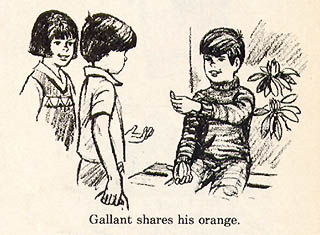
Have you ever thought of design as an opportunity to be kind to someone?
User experience designer Jeff Howard wonders if service design (a way of thinking about design in which the user experience has many “touchpoints” across many channels and contexts) isn’t ultimately a frustrating and Sisyphean task, where customers and users are always going to be disappointed simply because no system or experience can ever be perfect. He observes that no matter what the designer does right, users will always remember when and how a system let them down, even if it only fails them in a small way.
He offers an interesting alternative way of thinking about the design of service experiences:
Maybe the answer itself is counterintuitive. Rather than offering reliably excellent service, what about unpredictability? What if the answer lies in random acts of kindness? The bits of business that add value to a service, but that aren’t part of its core offering. Something we can’t anticipate, something that captures our attention — randomly exceeding our expectations. A foil to the capriciousness of human perception.
I totally agree, and not just about service design. In all forms of design, practicing random acts of design kindness is a great way to improve a user experience without radically overhauling your design process or revisiting the core strategy of your product.
A fun approach I like to use (sometimes unconsciously, sometimes deliberately) is to have an unofficial objective of having three delightful details in a design — a humorous error message, a helpful hint at a difficult juncture, a way to skip a step in a process, etc. The important thing here, as Jeff suggests, is to do it at an unexpected time, almost as a kind of surprise, just so it has an extra emotional impact on the user.
Of course we all want to make everything perfect, but it’s amazing how one delightful detail will stick out in a user’s mind.
Comments
5 responses to “Random Acts of Design Kindness”
Great point, and I really like your idea for three delightful details. Beyond kindness, I believe it’s important to make the user feel important by showing respect. A good design can say “please†and “thank you†and can hold the door open for somebody when their hands are full of grocery bags. This attitude is missing from so many experiences, virtual and otherwise. The challenge is getting it right in the design without being completely cheesy.
People sometimes complain to me about the terrible service at the DMV: bureaucracy, half-hour wait lines, etc. and I think of the time I tried to get my driver’s license when I lived in Africa, which involved waiting for 6 or 7 hours in a line that stretched for blocks and the waiting time to actually have your license mailed to you was 7 YEARS. So I am routinely delighted by the efficiency, rapid turn-around and customer service of the US system 🙂
The metaphor of kindness or politeness is a good one, but I think in a different way from “random, unpredictable acts of kindness”. The problem is still that it requires quite a few acts of unkindness in order to function as extraordinary, and that’s where a lot of “excellent” service gets it’s mileage from.
An amazing service only has the emotional impact it does because the customer/user deals with comparatively
terrible service from other companies on a regular basis. I think what this points to is the goal of delighting the user (an emotionally powerful event) is not a very good one.
Kindness is a useful metaphor because it involves a measure of reciprocity. We don’t think that kindness means filling someone’s life with bliss, removing all suffering and becoming their full-time servant. Really, it’s about treating someone with dignity, removing _pointless_ barriers and obstacles, all that stuff. You know what I mean. And that’s a good thing even if the customer gets used to it.
Looking at it this way (or tell me if this is a stupid exaggeration), doesn’t it seem like Jeff Howard is saying something like “We’ve worked hard to make sure people aren’t murdered in their sleep, but human beings are a bit capricious when it comes to judging our efforts in this regard, so what if the answer is counter-intuitive? What if we introduce a little unpredictability?”
@Mike: Yes, you’re right that Jeff’s point was precisely that the randomness is the part that might have the most potent psychological effect: when satisfaction is expected and is momentarily not delivered, an exaggerated sense of disappointment results, so perhaps an unexpected delight would have the opposite emotional effect.
Good article. I think the first few seconds are hardwired to be agenda setters. But we like to be pleasantly surprised afterwards also. Something that is a distinctive feature (among all the competition) that will be recalled easily. It signals that the company is not just interested in getting visitors through the door, as Matt pointed out, but providing a well thought out service.
Human touches can and do have impact – and it is helpful to both parties of any conversation when you suddenly realise the person helping you is in fact a person – but as someone currently waiting into the 2nd month to receive a dishwasher part being shipped (or possibly freshly manufactured – who knows) from the other side of the world, we really need to get the basics right first. It’s better to prevent the ‘difficult juncture’ than crack a joke. That call centre lady only gets the chance to surprise and delight if she’s backed up with civilised stock holding.